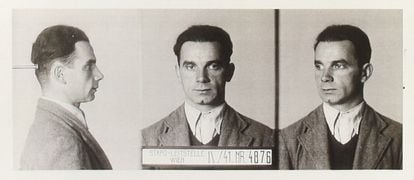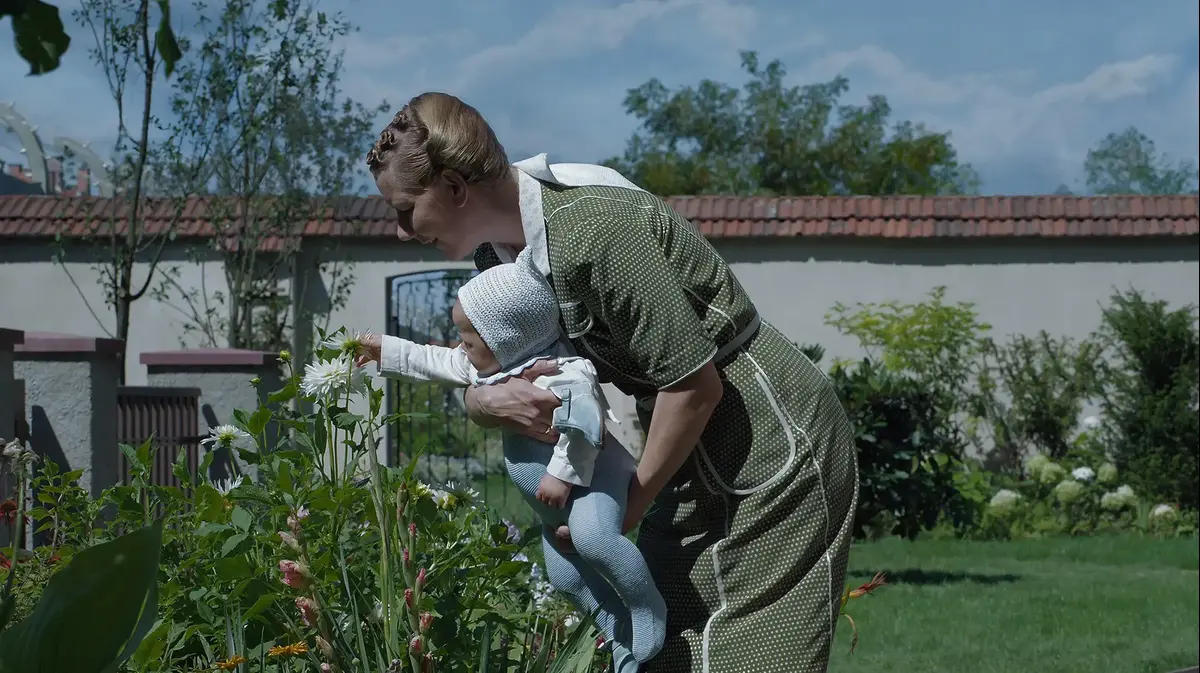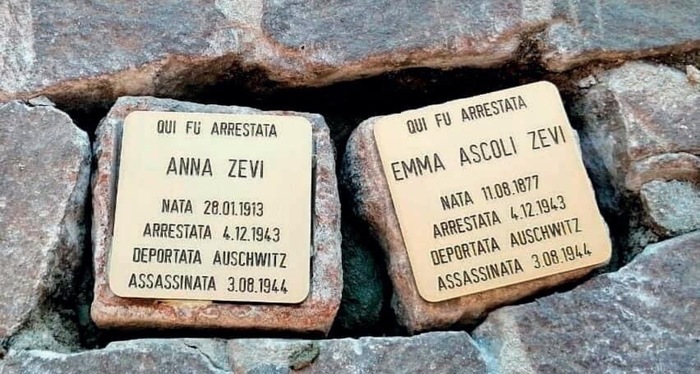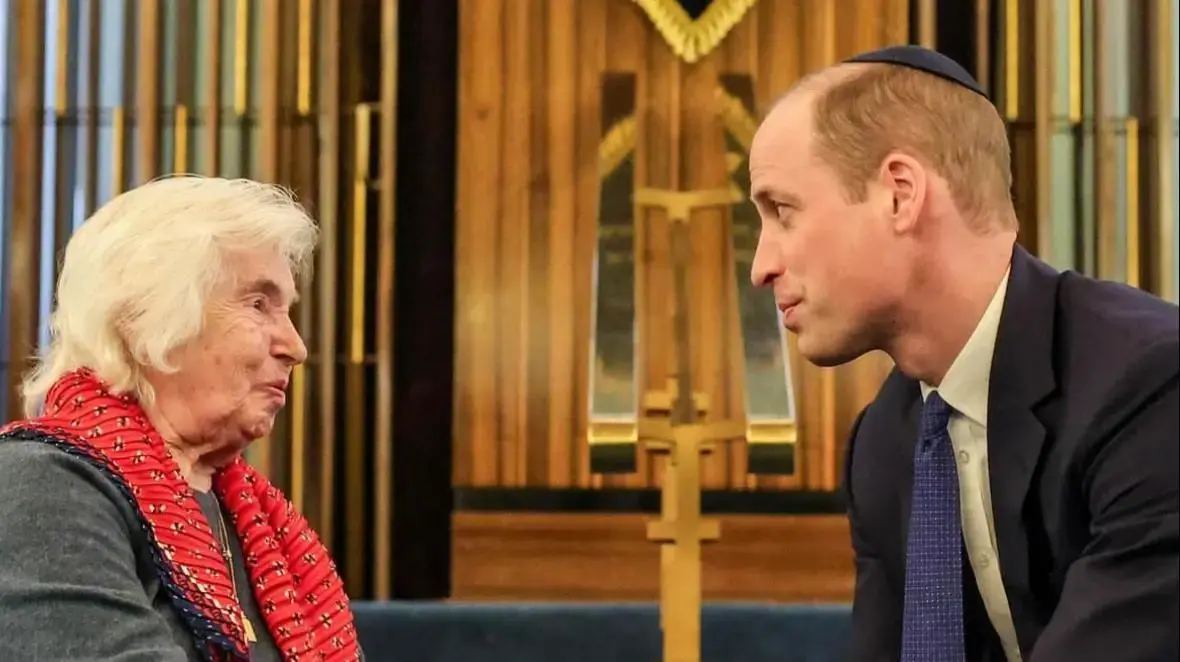Rudolf Friemel was allowed to grow his hair out for the wedding.
He borrowed a suit, tie, and shoes from the feared Nazi SS (Schutzstaffel) squadron.
His father and brother of him arrived by train from Vienna along with the bride, Margarita Ferrer, who was allowed to enter Auschwitz with their three-year-old son, Édouard.
A Polish prisoner took photos at the ceremony, which was followed by a small banquet.
The newlyweds spent their wedding night in the camp's brothel, a cell in Barracks 24. The next day they said goodbye, and Margarita returned with the family to Vienna.
Rudolf stayed behind as prisoner 25173 – they never saw each other again.
Their lives were the stuff of movies – a war movie with a tragic ending.
Rudolf Friemel and Margarita Ferrer met during the Spanish Civil War on the Ebro front in northeast Spain.
Friemel had joined the International Brigades to fight against the fascist forces led by Francisco Franco.
Ferrer was part of a group of anti-fascist women who came to cheer up the soldiers in the trenches when the fighting was beaten.
He was from Vienna – a good-looking, charismatic man with actor Robert Mitchum's cleft chin.
An auto mechanic, Friemel had been implicated in the murder of a police inspector during the February 1934 Austrian Uprising against the fascists.
She was a dark-eyed Spaniard who worked as a secretary in Barcelona.
When Franco's troops entered the city, she fled on foot with her sister de ella across the Pyrenees mountain range,
The Saint-Cyprien camp had been set up to accommodate refugees from the Spanish Civil War, but was later used by the Nazis for Jews and other prisoners.
A strip of fenced-in land along the Mediterranean sea, there was no shelter for the refugees and no drinking water.
Margarita and the other refugees struggled to survive on the sandy beach.
Unbeknownst to Margarita, Rudolf arrived soon after at Saint-Cyprien as a prisoner.
Before he was deported to Auschwitz in December 1941, Rudolf and Margarita found each other again and conceived their son, Édouard.
Édouard's son is now 48 years old, a tall redhead who works as an engineer in Marseille (France) and bears his grandfather's name.
Rodolphe Friemel recently donated original family papers about the Auschwitz wedding to the Municipal and Provincial Archives of Vienna (Austria).
They will be on exhibit at the Vienna City Library until September 30. Rodolphe speaks good Spanish, but he did not learn it from his grandmother, Margarita.
He was taught by her second husband, Paco Suárez, a Spanish Republican who survived the Nazi concentration camp in Mauthausen (Upper Austria).
For years after his release from the camp, Suárez drank his coffee from a can because cups were a luxury.
“I never talked with Marga about her wedding in Auschwitz because Paco couldn't stand it – he was jealous,” said Rodolphe, as he stood next to the display cases of photos, letters, wedding cards from other privileged Auschwitz prisoners, and official documents from his grandparents' wedding.
“My father finally started talking about it all toward the end of his life about him.
It was traumatic for him, so he always refused to discuss it.
One night I said to him, 'Dad, I can't stand the thought of you dying, and I need to talk to you about your childhood.'
I think he thought he owed it to his son.
He died a year later.”
Family photo taken at the wedding of Margarita and Rudolf on March 18, 1944. Rudolf Friemel Estate.
Vienna City Library
The exhibit catalog includes information from Erich Hackl, author of
The Wedding in Auschwitz
, a detailed oral history pieced together by Hackl from interviews with eyewitnesses and survivors.
In Krakow (Poland), Hackl met the wedding photographer – a Pole named Wilhelm Brasse who was sent to Auschwitz in August 1940 for refusing to enlist in the Nazi armed forces.
“Brasse had photographed Dr. Mengele's experiments, terrible images such as the Siamese twins sewn together back-to-back.
He took thousands of photos for the camp's identification service, a job that saved his life from him.
I have remembered the photos of the bride and groom as the only happy moment in Auschwitz,” said Hackl.
The wedding portraits are on display in the exhibition.
“To my faithful and brave wife on her big day from her.
Your Rudi.
Auschwitz, 18-III-44,” is written in Spanish on the back of one photo.
Rudolf Friemel had initiated a bureaucratic battle with German institutions long before the wedding to have Édouard officially recognized as his son.
Friemel was not a Jew, but a political prisoner who became useful to the SS because of his mechanical expertise.
As an Austrian, he was considered a German citizen and was allowed to send and receive mail, among other privileges.
His letters from him with stamps bearing Hitler's face and the Auschwitz concentration camp postmark are on display in Vienna.
Photos of Friemel from the Vienna Gestapo's identification service, September 1941. Rudolf Friemel Estate.
Vienna City Library
Letter from Rudolf Friemel to Margarita Friemel, July 30, 1944. Rudolf Friemel Estate.
Vienna City Library
The Nazi extermination machine at Auschwitz-Birkenau slaughtered more than a million people with industrial efficiency.
Only one wedding was held there in the five years that the camp operated.
Some say that the wedding was a cynical gesture by the camp commandant, a tool like
Theresienstadt: A Documentary Film from the Jewish Settlement Area
, the Nazi propaganda film that showed happy and healthy Jews resettled by the Germans in the enclave of Terezin (Czechia).
“It [the wedding] coincided with the appointment of a new commandant named Liebehenschel who tried to tone down the horror.
He was the one who allowed [the wedding],” said Hackl.
“But there is no clear-cut explanation [for allowing the wedding].
Life and death decisions were arbitrary.
As one survivor told me, 999 prisoners would be beaten to death while a thousand others were spared.
There's no point in searching for the reasons behind every authorization, every emergency decree.”
The extermination continued under Liebehenschel's command, and the wedding took place one spring morning in Auschwitz while smoke from the red brick chimney covered the camp with the stench of burning flesh.
A congratulatory card from Friemel's friends at Auschwitz, March 18, 1944. Estate of Rudolf Friemel.
Vienna City Library
Friemel's fellow prisoners felt euphoric about the wedding, a fleeting return to former freedoms that emboldened them to devise an escape plan.
When the plot was discovered, Friemel was hung in the same shirt he wore at the wedding, barely a month before the camp was liberated by the Soviet army.
As Friemel awaited the gallows, a sympathetic SS trooper helped him send a number of love letters to Marga that are on exhibit in Vienna.
The Friemel family's suffering at the hands of the Nazis didn't end with Rudolf's imprisonment and execution.
Rodolphe's maternal grandfather was executed in Paris during the German occupation after the Gestapo discovered that he was printing instructional material for the French Resistance.
“I also kept this material and took it to France's national archives,” said Rodolphe Friemel, “but they didn't accept it.
They don't have the resources and time to record it all.
It's a pity.”









